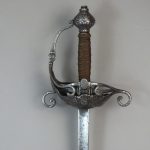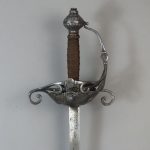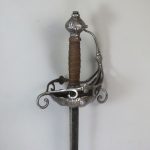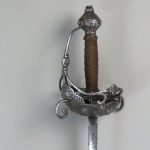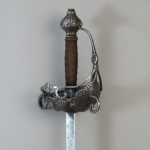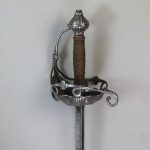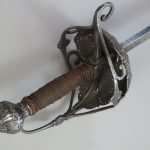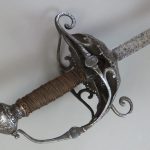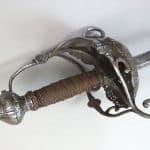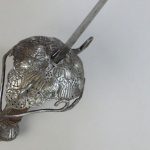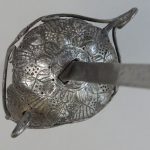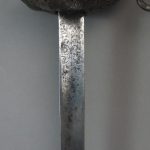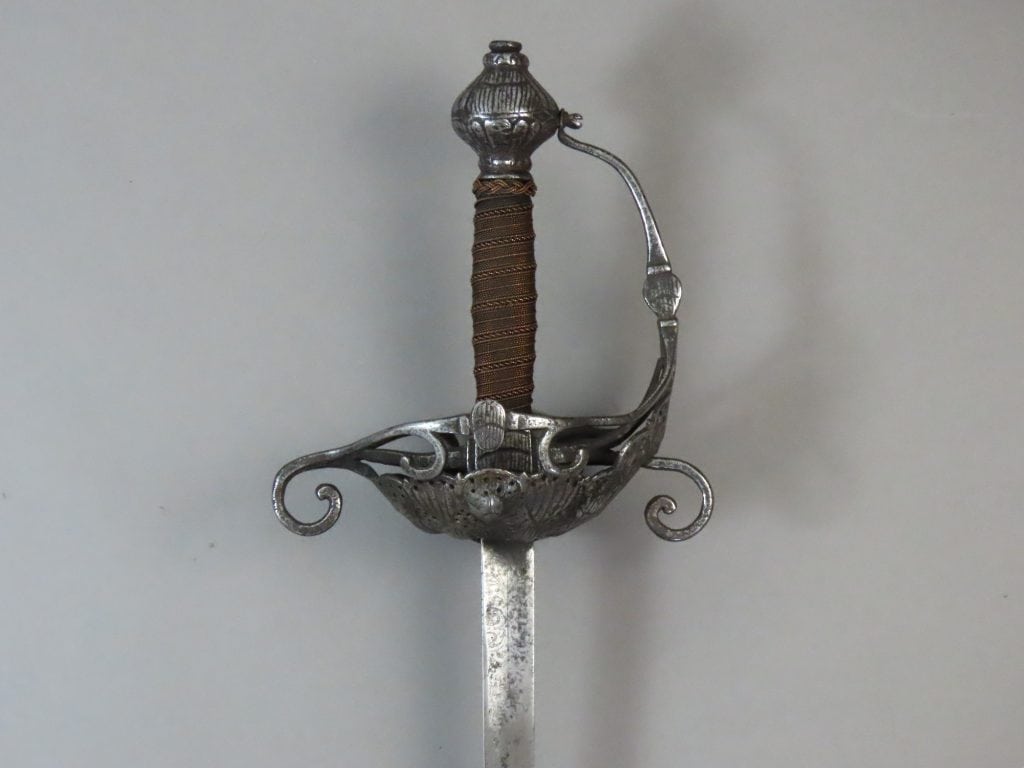
English Civil War Period Military Officers’ Rapier with a Boat Shell Guard
To enquire about this itemplease click here
Price: £3,975
Ref: 42020366
Item Description
An English Military Officers’ Rapier dating to circa 1625 to 1650. The fine quality wedge shaped blade is designed for cutting as well as thrusting in general and military usage rather than for dueling. The boat shell hilt is intricately chiselled, pierced and bossed with floral fan shaped features in the English style.
The dish guard is forged in one piece from beaten iron with an upturned prow at the front in boat shell shape. It is finely chiselled, pierced and bossed in the English manner with connected bordered fan shapes. The rim has a crescented edge corresponding to the tops of the outermost fans. The centre of the dish is chiselled with a roundel around the blade aperture.
The rectangular section quillon block is decorated in the same manner with fans. Front and back quillons emanate from the block and terminate in downward scrolls. The rear quillon is forged onto the guard rim with a short bar. The front quillon passes through the upturned boat prow.
From the front a slender knuckle bow emanates from the block and is attached to the top of the prow. It is swollen with a fan shape in the middle and terminates in a flattened angled aperture which is screwed into the pommel front. Two secondary guard bars emanate from the knuckle bow just below the middle and extend around the guard rim to which they are attached by two counter-curved bars on each side and terminate where they join the rear quillon. Each bar has a knop in the middle also decorated with chiselled fans.
The solid pear shaped pommel has an integral waisted neck beneath and raised button on top. It is decorated with chiselled decoration in the same style as the rest of the hilt. The grip is of rounded rectangular section spirally bound with copper wire and with woven “Turks’ Heads” mounted top and bottom.
The stiff tapering blade is of hollow ground wedge shaped section and just under 34 inches (86 cm) long. It has a short ricasso of rectangular section which fits the aperture in the guard showing that the hilt was made to accommodate this blade. There is engraved decoration of floral sprays on each side near the hilt, one side clearer than the other. The blade is probably a German import into England.
The rapier has an even grey patination all over its iron and steel parts. The hilt retains its pleasing original profile without damage or repairs. The overall length of the rapier is just over 41 inches (104 cm).
English rapiers of this date exhibit a broadly common form and style, however, there are many variations under this umbrella. Many are seemingly unique like our example discussed here. For examples of the different styles of English rapiers see Stuart C Mowbray, “British Military Swords”, 2013, Andrew Mowbray Publishers, Volume One, 1600 to 1660, pages 254 to 281.


